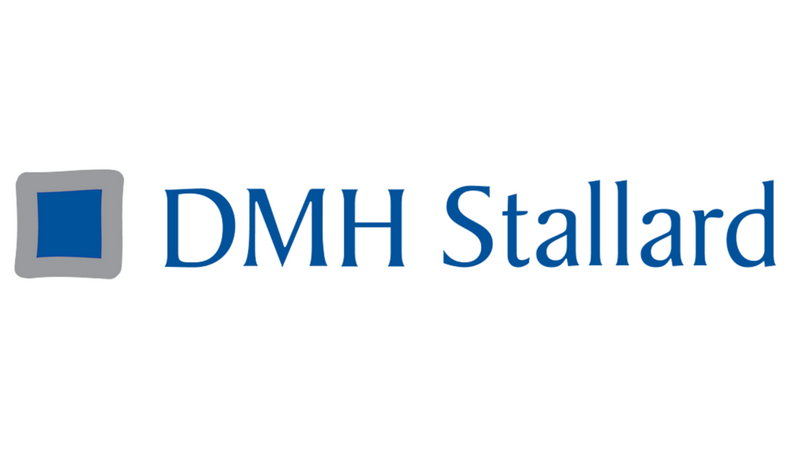Extech Cloud Speak to Jonathan Grant, DMH Stallard: Mid-sized law firms face a strategic challenge over the next few years
Competing for clients and finding ways to maximise profits always has, and will always, be a main objective of any firm. How firms decide to do this will vary, from competing by geography and service or by maximising efficiencies and reducing costs. Either way, the goal is to seek ways to improve the firm’s fortunes. In crowded and mature market spaces, though, it becomes increasingly difficult to compete and some firms are now facing a squeeze in margins as the industry changes.

“One of the big trends over the last five years has been consolidation and growth of larger firms by merger and acquisition; this is happening regionally, nationally and internationally” says Jonathan Grant, DMH Stallard partner and head of its corporate department. Jonathan led DMH Stallard to win Corporate Law Firm of the Year in 2016, 2014 and 2012, as well as winning Corporate Lawyer of the Year at the Insider South East Deal Maker Awards in 2018 and 2015.
“Recently, we’ve seen large UK and US firms merging and we’re seeing that trend in the region too. There’s a handful of firms outside of London who have scaled through mergers”. Growth by M&A is typical of a mature industry, with the Law Society forecasting that the legal industry will grow between 1.5% – 2.2% between 2019 – 2025, depending on the outcome of the Brexit deal.
“The logic for merger and consolidation is compelling, to gain fees/clients and increase the revenue generated from committed fixed property costs, rationalise and save on duplicated central costs (HR, finance and insurance), but also to increase the combined firms impact in their chosen market and attraction to young lawyers and partners from other firms, who can contribute further growth.”
“Whilst the (full service/general practice firms) are looking at growth/consolidation, there is also an increase in the number of smaller firms, many offering particular specialised services, who can take advantage of being niche and operating with lower cost/management”. These “niche” firms are able to design a practice around one particular area of the law, creating a strong brand and efficiencies.
The area where there is most thought needed is the firms that do not fall into the “niche” or the “larger general practice” firms, those who are not quite either. “You have town general practice firms, generally between £2m and £15m turnover, who are increasingly being squeezed by the financing costs of running the business, recruiting and maintaining staff, maintaining offices, insurance and practice management/document production and library resources”. This conflict between niche services and scalability is perhaps one of the strategic challenges small to mid-sized law firms face over the next five years. “These same pressures exist in London and in the regions, and for many there is a related challenge of succession (how are older retiring partners to be replaced?). This changing market is affecting all law firms one way or another.” So how do town firms increase their client margin over the next five years without scale or differentiation?
The answer to that will vary depending on the unique circumstances and the combination of strengths and weaknesses of each firm. One way general practice and niche law firms can compete is by using their relative size to their advantage. Fewer partners and staff means decisions should be quicker to make and faster to implement. Firms may be able to find new efficiencies by applying this agility to market demands and new working models quicker than its competitors. Technology, for example, is one area in law which is increasingly offering solutions which streamline working practices and allow firms to process larger volumes of work within current time and personnel constraints (full disclosure: Extech Cloud provide technological solution and consultancy for law firms).
How a law firm works is no different from any other business in some respects. The firm has a pipeline of work which the faster it can service the more revenue it can realise. There are similarities with the automobile industry, where demand is created, and it’s the organisation’s job the ensure that work flows through the production line as quickly as possible, at the highest quality possible and the lowest cost available. Tesla, for example, as a relatively new and small car manufacturer, do not have years of knowledge and experience in manufacturing cars. However, they use their smaller size and agility to their advantage, by leveraging the ability to make process improvements on the fly, rather than in the prototype phase like other manufacturers. Although this does pose different challenges, it does allow Tesla to compete and explore innovative methods in production and process improvement. Which, in turn, enables it to become the world’s first mass-market producer of electric vehicles.
With the emergence of artificial intelligence, Jonathan Grant notes that “the dynamics of law firms will change with AI, which could increase the amount of work a firm can produce without increasing its costs”. Some firms are already using AI indirectly, via the use of cloud products which incorporate the technology in its development. Without the strong brand presence and resources of firms such as DMH Stallard, or the focused niche services of smaller practices, smaller firms must understand how they are going to compete. It is perhaps then this agility and the technological opportunities which firms can seize to increase their fortunes and future outlook. Only time will tell.
First published on: https://extechcloud.com/jonathan-grant-dmh-stallard-mid-sized-law-firms-face-a-strategic-challenge-over-the-next-few-years/
